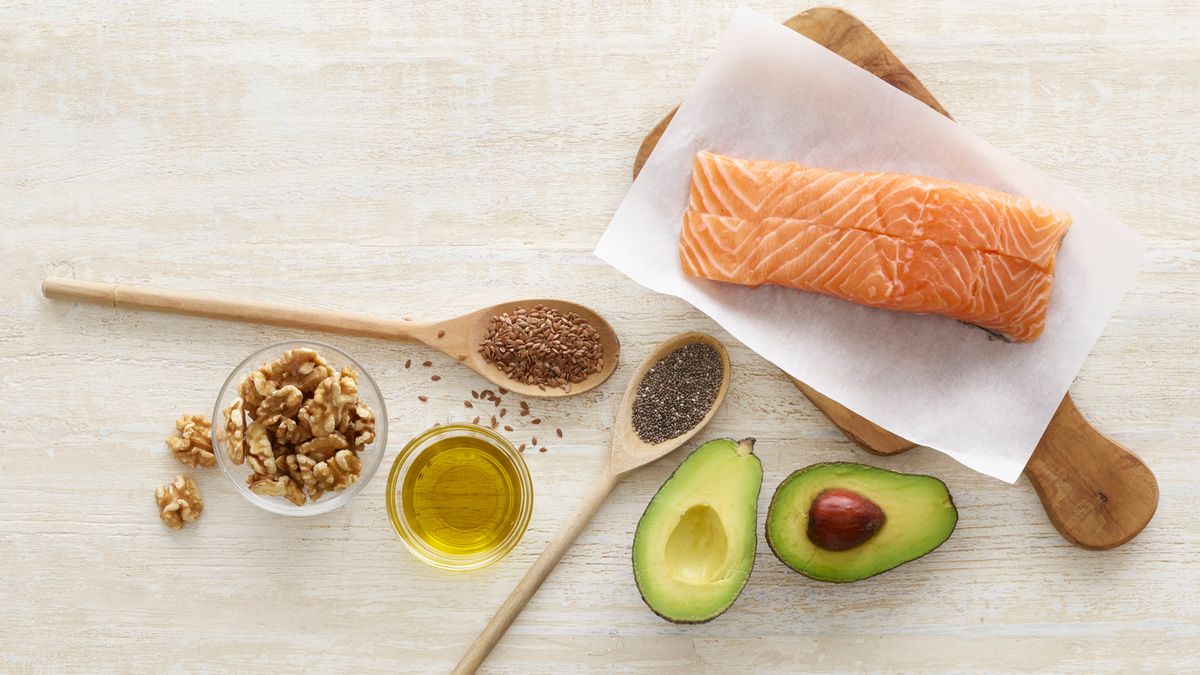What are omega-3 fatty acids?
Omega-3 fatty acids are essential for good health, but what are they and what foods contain them?

Omega-3 fatty acids are a family of short and long chain fatty acids that play an important role in the proper functioning of our bodies. They help to support brain health, reduce inflammation and promote good cardiovascular health.
Here, we've dived into the role of omega-3 fatty acids in the body and explained where you can get them from a balanced diet.
What are omega-3 fatty acids?
According to Rachel Clarkson, a registered dietician based in London, England, omega-3 fats are a type of polyunsaturated fat found in nuts, seeds, and oily fish. Polyunsaturated fats are structured as chains of carbon and hydrogen, sometimes connected to other chains of carbon and hydrogen by a connection called a double bond. Some chains contain more than one double bond in their carbon chain, with empty spaces for hydrogen along the chain. This makes them unsaturated.
"Omega-3 fats are essential fatty acids, meaning we must get enough of them from food because the body cannot make them from scratch," Clarkson told Live Science. "They are essential for reducing inflammation in the body and keeping the brain and heart healthy."
The three most common omega-3 fatty acids used by the body are:
- Eicosapentaenoic acid (EPA)
- Docosahexaenoic acid (DHA)
- Alpha-linolenic acid (ALA)

EPA and DHA are known as long chain fatty acids, Clarkson said. Long chain fatty acids differ from short chain fatty acids in their structural makeup; short chain fatty acids have fewer than six carbon atoms per chain, while long chain fatty acids have 12 or more carbon atoms.
"Our body can use these types of omega-3 and absorb them better than it can ALA, a short-chain fatty acid," Clarkson said. This is because ALA is less bioavailable than EPA and DHA, meaning it takes longer to digest and enter our systems.
Our bodies can use ALA to make EPA and DHA, however, Clarkson said that this conversion is slow and not very efficient. ALA is converted to EPA and DHA by being broken down and metabolized by the body in desaturation and elongation steps that change the structure of the carbon chain.
"Therefore, getting enough EPA and DHA is essential," she said.
What are the benefits of omega-3 fatty acids?
While omega-3s are thought to play a role in treating and preventing diseases, these effects are hard to measure. There isn't a definitive study that shows that eating a certain amount of omega-3s reduces your risk of a specific disease by a certain percentage. Instead, there are many studies, and reviews of these studies, that point toward a general belief that omega-3s are good for your health.
According to Roxanna Ehsani, a registered dietitian based in Florida, and media spokesperson for the Academy of Nutrition and Dietetics, consuming omega-3 fatty acids can reduce the concentration of inflammatory molecules in the body, which can help to reduce the risk of chronic diseases, such as high blood pressure and heart disease, and cancers.

Roxana Ehsani is a board-certified specialist in sports dietetics and a National Media Spokesperson for the Academy of Nutrition and Dietetics. She holds a Bachelor of Science in Human Nutrition, Foods and Exercise from Virginia Tech and a Master of Science in Clinical Nutrition and Dietetics from the University of Pittsburgh.
"Athletes and active people who engage in regular physical activity each day and develop muscle pain can also benefit from consuming omega-3 rich foods as they can help reduce muscle pain and inflammation in the body," she said.
Ehsani also told Live Science that the brain is composed of about 60% fat, and it needs healthy fats like omega-3 to function properly. It uses omega-3 fatty acids to communicate between brain cells, as they are abundant in cell membranes of brian cells, which give cells their structure.
"Research in Nutrients has found that consuming omega-3 fatty acids may reduce the risk of cognitive decline, dementia, and Alzheimer's," she told Live Science. "Omega-3s can help to reduce cardiovascular disease risk factors such as high blood pressure and high lipid levels in the blood."
How much omega-3 should you consume?
According to the National Institutes of Health's Office of Dietary Supplements, there is no recommended dietary allowance (RDA) for omega-3, but there is an adequate intake level (AI). An AI indicates the amount of a nutrient one needs to eat each day that appears to support good health. It is used when there isn't enough information to set a specific recommended daily amount.
However, in the case of omega-3, Ehsani said that the AI only applies to ALA. "For adult males it's 1.1 grams [0.03 ounces] and for adult women it's 1.6 grams [0.05 ounces]," she said. "Recommended amounts of EPA and DHA have not yet been established."
A typical serving of fish contains about 0.007oz [0.2g] of ALA, while a tablespoon of flaxseed oil contains 0.246oz [7g] of ALA.
The NIH suggests that you can get adequate amounts of omega-3s by eating a variety of foods, including:
- Fish and other seafood (especially oily fish, such as salmon, mackerel, tuna, herring, and sardines)
- Nuts and seeds (such as flaxseed, chia seeds, and walnuts)
- Plant oils (such as flaxseed oil, soybean oil, and canola oil)
- Fortified foods (such as certain brands of eggs, yogurt, juices and milk)
This article is for informational purposes only and is not meant to offer medical advice.
Sign up for the Live Science daily newsletter now
Get the world’s most fascinating discoveries delivered straight to your inbox.

Lou Mudge is a health writer based in Bath, United Kingdom for Future PLC. She holds an undergraduate degree in creative writing from Bath Spa University, and her work has appeared in Live Science, Tom's Guide, Fit & Well, Coach, T3, and Tech Radar, among others. She regularly writes about health and fitness-related topics such as air quality, gut health, diet and nutrition and the impacts these things have on our lives.
She has worked for the University of Bath on a chemistry research project and produced a short book in collaboration with the department of education at Bath Spa University.












